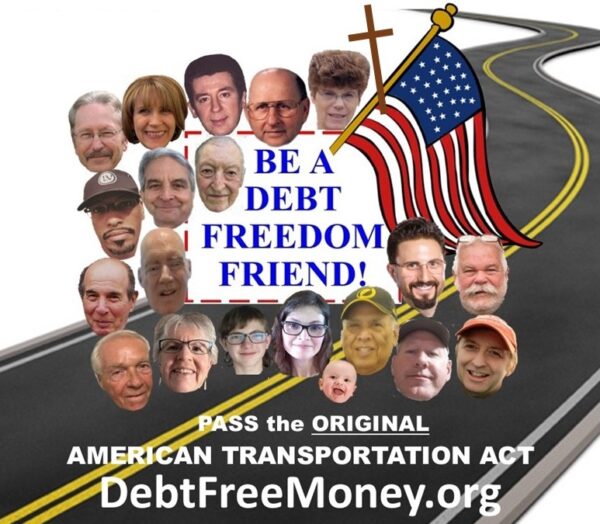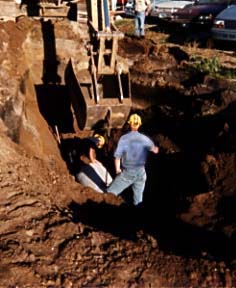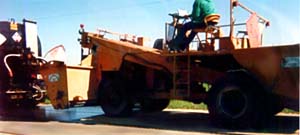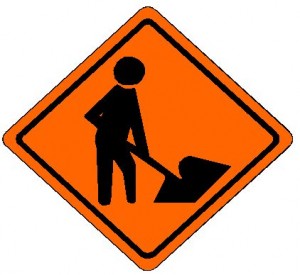
Prices would continue to come down as the debt came out of the costs of goods and services. As more and more citizens discovered work to be rewarding, worthwhile, and living affordable, the need for costly social help programs would diminish. Taxes would go down, leaving more income directly in the hands of earners to spend as they see fit on goods and services or to save.
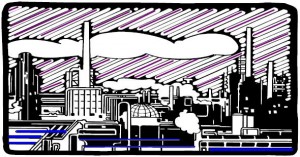 If, heaven forbid, we might find our great nation at full employment, robotics and automation would fill the production demands to increase capacity instead of reducing costs as is done today.
If, heaven forbid, we might find our great nation at full employment, robotics and automation would fill the production demands to increase capacity instead of reducing costs as is done today.
An excess profits tax on the interest paid to banks for loans they created by monetizing the debts would resupply our government with the revenues normally required for social programs until our economy got healthy enough that citizens no longer needed them.
Nothing would change about how we determine when, were and who will build our roads and bridges. The only change would be where and how the money to pay for them would originate.
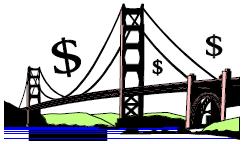
Rather than paying for roads, bridge construction and maintenance with taxes paid from money created as bank loans we would pay with brand new money created as a wealth payment for productive work, that benefits everyone. This process would work on the same principles as the employer-employee relationship. You get a paycheck given to you in exchange for work, talent, ideas, etc. you provide to your employer. You don’t OWE the paycheck. You OWN it. Recent Welfare Reform is based upon the same principle if you work, (produce) you get paid. If you don’t work, you don’t get paid. Money should be produced like anything else. If we want to be able to exchange the wealth we produce for a medium of exchange, then money must also be produced as a wealth like everything else. As a sidenote, in case you didn’t notice, the new Welfare Reform announced Sept. 19, 1995 by the Congress will not solve any fiscal problems under our current debt. If all welfare recipients work for pay it will still cost the same. If some do not work and don’t get paid, you will not see more take-home pay in your paycheck because the debt and overall cost of living will continue to rise and become more and more difficult to meet.
When roads or bridges are complete to bid specifications, the person in charge of paying the contractor would request payment from the Treasury. The Treasury would create and provide the payment in bills denominated from $1 to $100,000 as payment for work performed. One kind of production, roads and bridges, exchanged for another kind of production-money. Both created with labor and raw resources and exchanged one for the other.
A debit would be made to our Nation’s Raw Resource account in the amount equal to the work performed. The new money would be paid into circulation. No new money could ever be created and paid until the work had been done. It is essential that no money is created except for work done that unquestionably benefits all citizens equally. The money would be paid into circulation debt-free. Our government would hold the roads and bridges in ‘trust’ for the people to use free of any taxation or fees of any kind. The money, a symbol of our Nation’s wealth would come into circulation when the workers got paid. They would then spend their income into the economy exactly the way people spend their borrowed debt-credit now for the things they buy.. the things we all spend money on…food, shelter, clothing, vacations, cars, etc. This is similar to what happens now except, today, the money is created as interest-bearing loans to us when we go to a bank, put up collateral (something produced) and promise to produce something in the future to repay more money than we borrowed. Now, when the money is created as a debit to a loan account and a credit to a new or existing checking account and we write checks against the loan, brand new money goes into circulation that never existed before. Of course, not everyone benefits from this system of money creation. In fact, everyone is hurt by this system. The inevitable inflation and unpayable debt it creates makes it more and more difficult to make ends meet and some one must go bankrupt for the other’s to pay their interest.
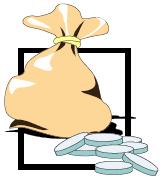 The best America ever had was a Wealth system attempting to function simultaneously with a bank-created debt-credit money system. Clearly, the 1792 Coinage Act defined how money was to be created based upon the principles of our government coining (monetizing) the peoples’ production. However, over time, those desiring a change managed to succeed in changing our monetary system to one based completely on bank debt-credit. The system can again be changed by those desiring change. It was changed from wealth to debt. We can change it from debt to wealth.
The best America ever had was a Wealth system attempting to function simultaneously with a bank-created debt-credit money system. Clearly, the 1792 Coinage Act defined how money was to be created based upon the principles of our government coining (monetizing) the peoples’ production. However, over time, those desiring a change managed to succeed in changing our monetary system to one based completely on bank debt-credit. The system can again be changed by those desiring change. It was changed from wealth to debt. We can change it from debt to wealth.
Banks, checking accounts, savings accounts and loans would continue to be a reality on the morning of January 1, 2006 after implementation of the American Transportation Act. However, banks will no longer create money nor credit of any kind after a phase-out period. Banks will be able to loan money to customers but this money would be money that had actually been deposited by another customer. The money could not be used by the depositor again until the borrower had paid the money back.
Dollar bills will change slightly in that the words “Federal Reserve note” will no longer be displayed. As Federal Reserve Notes are deposited with depositories (banks), they will be destroyed and exchanged on a one for one basis with the newly worded bills. In our new Wealth-Money system our money could bear no symbol or indication of a debt instrument.

This changing of our currency would be a reverse of what happened in 1933 when President FD Roosevelt dictated by Executive order to the people that they had to exchange their remaining gold coin and gold certificates (Wealth money) for Federal Reserve Debt-Money Notes. However, the American Transportation Act would threaten no one with fine or imprisonment or both for not exchanging their Fed Notes. This would be unnecessary because all Federal Reserve Notes would eventually die a natural death as the exchange process continued and Fed Notes were no longer printed. The AMERICAN TRANSPORTATION ACT reverses the rotten process implemented by a well-meaning but highly misguided FDR. It turns us away from Totalitarian Socialism and points us down the path to our Constitutional Republican form of Government and guaranteed rights to Life, Liberty and Freedom.
When we create new money through the production of roads and bridges we will most likely learn better ways to build them. They’ll last longer and the costs will of course go down. The roads will probably be lighted rather than painted. We could heat the roads to remove ice for greater safety and cool the roads to prevent hot weather “blowups” In this heat-transfer process, we might develop ways to use the geo-thermal energy extracted from the roads. Tunnels, their lighting, utility hardware, etc. would also be considered a benefit to all citizens. All signage, rest areas, utility sewers, gas and electrical lines normally incorporated with the construction of public roads would be considered infrastructure. The recycling process currently used in road building would continue to improve in speed, efficiency and techniques. New and better ways of tearing up tar, concrete, steel, rock and gravel and laying it back down would improve while promoting the development of technologies, high-tech industries, products and jobs. Again roads and bridges would last longer, become safer serve better and become less expensive to produce as the total debt was paid out of the system through the implementation of the American Transportation Act.
Ways to collect and treat grease, oils, fuels and other transportation by-products unfriendly to the environment, snow removal, pot hole repair, all would be paid for through the new money creation system. All work would be conducted by the people through their state, county, township, and local governments.
As roads became better and safer, vehicle maintenance and insurance costs would go down further reducing the costs of goods and services allowing for greater savings. Faster, safer road performance would also reduce costs. As the new money paid existing debt out of the economy, taxes and prices would continually go down while “buying power” increased. Research and development investment would flourish. We could afford to pay the “minds” capable of doing the study necessary to find the cures and preventions for diseases. etc.
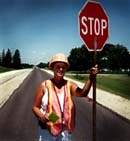 When the American Transportation Act is passed, the slow phasing out of the creation of all debt money could be accomplished by increasing the banking system’s reserve requirement by 2% monthly until no debt-credit or money was being created by the banking industry.
When the American Transportation Act is passed, the slow phasing out of the creation of all debt money could be accomplished by increasing the banking system’s reserve requirement by 2% monthly until no debt-credit or money was being created by the banking industry.
Because the debts are a direct creation of the banking system, an excess profits tax would be levied on interest payments to banks. If this were not done, the banks would eventually receive the benefit of all the new money as it came to them as interest on loan payments.
This excess profits tax would provide a source of revenue to government to pay for current costly social programs until the economy turned around and the social programs were no longer needed. This action would create additional tax relief for citizens resulting in greater “take-home” pay, greater spending and buying power, increased demand for goods and services and productivity.
As people once again discovered that they could work, keep the fruits of the labor and earn a decent standard of living, they would forsake handouts, welfare, non-productive living and borrowing. Instead they would work, become more and more self-sufficient and save. More of their earnings would be left over after buying and paying for their needs and wants. Eventually, inflation would be practically non-existent. People could lay a plan for retirement at the age of 25, establish how much money they’d need at retirement and feel secure knowing that they could live out the remainder of their life in the manner they desire without running out of money because prices would not change much. People could retire on their ‘principal’ savings of a lifetime rather-than having to pray that their Socialist Security payments would support them.
Of course, after all this, government size would be small, our control of it restored. Government workers would find interesting, challenging, profitable employment and careers in the private sector because of the environment created in this truly prosperous, debt-free, Wealth economy.
*Photo of flag carrier – Christy Wells, LaCrosse Wisc.
